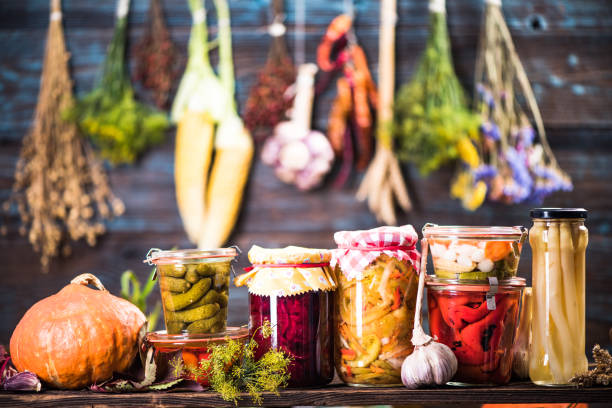Food Safety Guidelines
Comprehensive Guidelines for Preventing Food Contamination to Maintain Food Safety
Preventing food contamination is essential for maintaining food safety and ensuring that the food you prepare and consume is free from harmful pathogens. Effective food safety practices help reduce the risk of foodborne illnesses and protect your health. Below are comprehensive guidelines for preventing food contamination across various stages of food handling and preparation.
1. Personal Hygiene
Why It’s Important: Good personal hygiene helps prevent the spread of bacteria and other contaminants.
Guidelines:
- Wash Hands: Always wash hands with soap and water for at least 20 seconds before handling food, after touching raw meat, and after using the restroom.
- Clean Clothing: Wear clean clothes and aprons when cooking. Avoid cooking if you are ill to prevent spreading illness.
- Avoid Touching Face: Refrain from touching your face, especially the nose and mouth, while preparing food.
2. Kitchen Cleanliness
Why It’s Important: A clean kitchen reduces the risk of cross-contamination and bacterial growth.
Guidelines:
- Clean Surfaces: Regularly clean countertops, cutting boards, and utensils with hot, soapy water. Use a disinfectant for surfaces that come into contact with raw foods.
- Sanitize Sponges and Towels: Replace or sanitize sponges and dishcloths frequently. Use a bleach solution or microwave damp sponges for sanitization.
- Clean Appliances: Wipe down and clean appliances, including refrigerators, ovens, and microwaves, regularly.
3. Safe Food Handling
Why It’s Important: Proper food handling practices prevent cross-contamination and contamination from raw foods.
Guidelines:
- Separate Raw and Cooked Foods: Use separate cutting boards and utensils for raw meats, poultry, and seafood to avoid cross-contamination. Store raw foods below cooked foods in the refrigerator.
- Use Safe Utensils: Use clean utensils and dishes for serving cooked foods. Avoid using the same utensils for raw and cooked foods without washing them first.
4. Cooking Practices
Why It’s Important: Cooking food to the right temperature kills harmful bacteria and pathogens.
Guidelines:
- Use a Food Thermometer: Check the internal temperature of meats, poultry, and seafood. Follow recommended temperatures (e.g., 165°F for poultry, 145°F for fish).
- Cook Evenly: Ensure that food is cooked evenly by stirring and rotating dishes in the oven or on the stovetop.
- Avoid Partial Cooking: Do not partially cook food and finish cooking later, as this can allow bacteria to grow.
5. Food Storage
Why It’s Important: Proper storage prevents the growth of bacteria and extends the shelf life of foods.
Guidelines:
- Refrigerate Promptly: Store perishable foods in the refrigerator or freezer within two hours (or one hour if the temperature is above 90°F).
- Keep Food Covered: Use airtight containers to keep food fresh and prevent contamination.
- Maintain Temperature: Keep refrigerators at 40°F (4°C) or below and freezers at 0°F (-18°C) to ensure safe storage.
6. Thawing Foods Safely
Why It’s Important: Improper thawing can lead to bacterial growth and foodborne illnesses.
Guidelines:
- Refrigerator Thawing: Thaw frozen foods in the refrigerator to keep them at a safe temperature.
- Cold Water Thawing: Use the cold water method (submerge in cold water, changing the water every 30 minutes) and cook immediately after thawing.
- Avoid Room Temperature: Do not thaw foods at room temperature as this can cause bacteria to multiply rapidly.
7. Food Preparation
Why It’s Important: Proper preparation techniques prevent contamination and ensure food safety.
Guidelines:
- Wash Fruits and Vegetables: Rinse fruits and vegetables under running water before consumption or cooking. Use a brush for firm produce.
- Peel and Trim: Peel or trim the outer layers of fruits and vegetables if necessary to remove dirt and contaminants.
- Avoid Overcrowding: Do not overcrowd pans or baking sheets, as this can prevent even cooking.
8. Monitoring Food Quality
Why It’s Important: Ensuring that food is fresh and of good quality helps prevent contamination.
Guidelines:
- Check Expiration Dates: Regularly check and adhere to expiration dates on packaged foods.
- Inspect for Spoilage: Look for signs of spoilage such as off smells, changes in color, or mold growth before consuming.
9. Safe Canning and Preserving
Why It’s Important: Proper canning and preserving techniques prevent foodborne illnesses and ensure food safety.
Guidelines:
- Use Tested Recipes: Follow tested recipes and guidelines for canning, freezing, and drying to ensure safety.
- Check Seals: Ensure that canned goods have proper seals and are stored in a cool, dark place.
10. Educate and Train
Why It’s Important: Educating yourself and others about food safety practices helps maintain a safe cooking environment.
Guidelines:
- Stay Informed: Keep up-to-date with food safety guidelines and best practices from reputable sources.
- Train Family Members: Educate family members and household members about proper food handling and safety practices.
Conclusion
Implementing these comprehensive food safety guidelines helps prevent contamination and maintain the quality of the food you prepare. By following these practices, you can ensure a safe and healthy cooking environment, reducing the risk of foodborne illnesses and promoting overall wellness.

